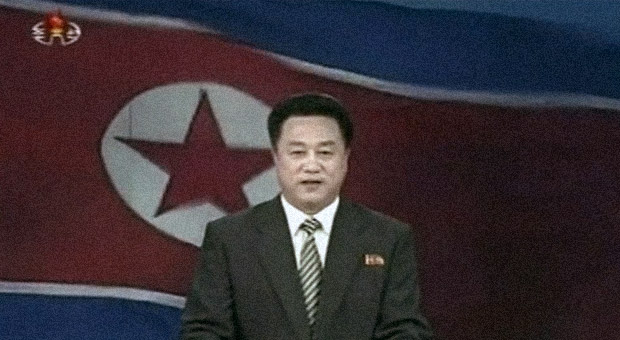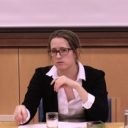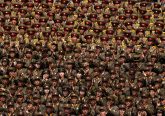
Yesterday, at around 3:00 GMT, North Korea conducted a third nuclear test. According to the official KCNA news agency, “the test was conducted safely and perfectly at a high level…with a higher-yield, smaller, lighter atomic device” (the full televised report [in Korean] is available here). The Comprehensive Test Ban Treaty Organisation (CTBTO), located in Vienna, soon confirmed that something was amiss on the seismic front, with the detection of ‘an explosion-like event’ on the Korean Peninsula, near to the site of North Korea’s nuclear weapons tests in 2006 and 2009. The timing of the 2013 test is not unexpected and the US and China were notified in advance. Some will read into the fact that the timing clashes with Obama’s State of the Union address. Others will point to the anniversary of former leader Kim Jong IL’s birthday on 16 February,. The timing of such things is not a precise science, however, and a number of factors, political and non-political (such as the weather), need to be considered. In any event, for us nuclear wonks, timing is less important. What matters more is reflected in the current scramble among experts to verify and identify the technical details: the exact yield and type of device, as well as the political and security implications of the test, regionally and globally.
On the technical front, North Korea’s 2013 explosion-like test seems different to those conducted in 2006 and 2009 for a number of reasons.[1] First, according to the CTBTO press briefing, the current nuclear event is said to have twice the magnitude of the 2009 test. For comparison, the 2006 test was reported to be 3.9 in magnitude (which translates into an estimated 1 kiloton in yield) and the 2009 test was 4.5 in magnitude (2-7 kilotons in yield).[2] Experts predict the 2013 test is likely to be between 6 and 10 kilotons in yield. By way of further comparison, the atomic bomb the US dropped on Nagasaki in 1945 was 20 kilotons in yield. In other words, if estimates are correct, the North Koreans have tested a more powerful nuclear device compared to those in 2006 and 2009. Second, the test is apparently smaller in size (recall the KCNA statement of a ‘smaller, lighter atomic device’ which suggests some success at miniaturisation). If so, this is indeed significant. So far, one of the biggest problems for North Korea in the weaponisation process has been delivery: although it has been able to develop and test nuclear devices, these have been too bulky and big to place on a missile. As a consequence, North Korea has only had the capacity to deliver a nuclear weapon via crude transportation methods (for example by boat or on a lorry). If the nuclear device tested today is sufficiently small to place on a missile, this represents a significant advancement in the North’s capabilities. Third, unlike previous tests which used plutonium as the fissile material of choice, the 2013 device likely consists of highly enriched uranium (HEU – On the technical means to decipher whether a device is HEU or Plutonium, see here). This change was expected by a number of experts like Siegfried S. Hecker of Stanford University, who, in 2010, discovered a covert HEU facility during a visit to North Korea. The difference in fissile material is important. Pyongyang has only a limited amount of plutonium at its disposal, restricting the number of possible weapons it can build to 4-8 devices. This is not true of HEU, and North Korea is likely to be able to produce more bombs following this route.
The political and security implications of the test are also different this time round. If the technical aspects discussed above are correct, then North Korea poses an even greater security threat, bolstering the argument for missile defence and a stronger US presence in the region. There are even fears that this time round North Korea might share the results of its test with Iran, thereby aiding Tehran’s nuclear activities. The test also deals a serious blow to any efforts to resume the Six Party Talks, dormant since 2009. To compound matters, compared to 2006 and 2009 this is a different period in Sino-DPRK relations. Some claim the North Koreans are increasingly resentful of the Chinese, and in turn, the Chinese have lost all patience with the North. Given that the international community, especially the US, relies on the Chinese to curb Pyongyang’s behaviour, this is not a good sign. More broadly, the Chinese response matters more today than it did in 2009. For one thing, China has a new leader, Xi Jinping. This is his first real test (excuse the pun) in dealing with this issue. Will he follow the example of his predecessor, the so-called ‘indecisive’ Hu Jintao, or will he take a stronger stand? It is too early to tell. So far the response from Beijing has been limited to an unoriginal statement from the Foreign Ministry and a handful of headlines in the Global Times. There is an on-going debate in China on North Korea policy. However, whatever the outcome of this debate, drastic change in China’s preferences on the North Korean issue is unlikely: stability over nukes.
It would seem, then, that the stakes, both technical and political, are higher this time round. As Obama prepares to give his State of the Union speech, perhaps he should take heed from the nuclear community and reinvigorate the momentum he built back in 2009 around the notion of a ‘nuclear spring’ and a nuclear weapons free world.
[1] This blog is written on the day of the test, some important technical details, especially as they relate to radionuclide release –which can identify isotopes, will take several days to emerge.
[2] A debate still rages among experts on the exact yield of the 2009 test.
Dr Nicola Horsburgh is a British Academy Postdoctoral Fellow at the Oxford Institute for Ethics, Law, and Armed Conflict and Department of Politics and International Relations, Oxford. You can follow here on twitter: @NicolaHorsburgh






3 Comments
“It would seem, then, that the stakes, both technical and political, are higher this time round. As Obama prepares to give his State of the Union speech, perhaps he should take heed from the nuclear community and reinvigorate the momentum he built back in 2009 around the notion of a ‘nuclear spring’ and a nuclear weapons free world.”
Agreed. I consider myself an Obama supporter, but I cannot help but feel that he let the opportunity pass him by with his speech. More of the same, but little substance. Let’s hope John Kerry is able to bring something to the table in order to get this momentum back.